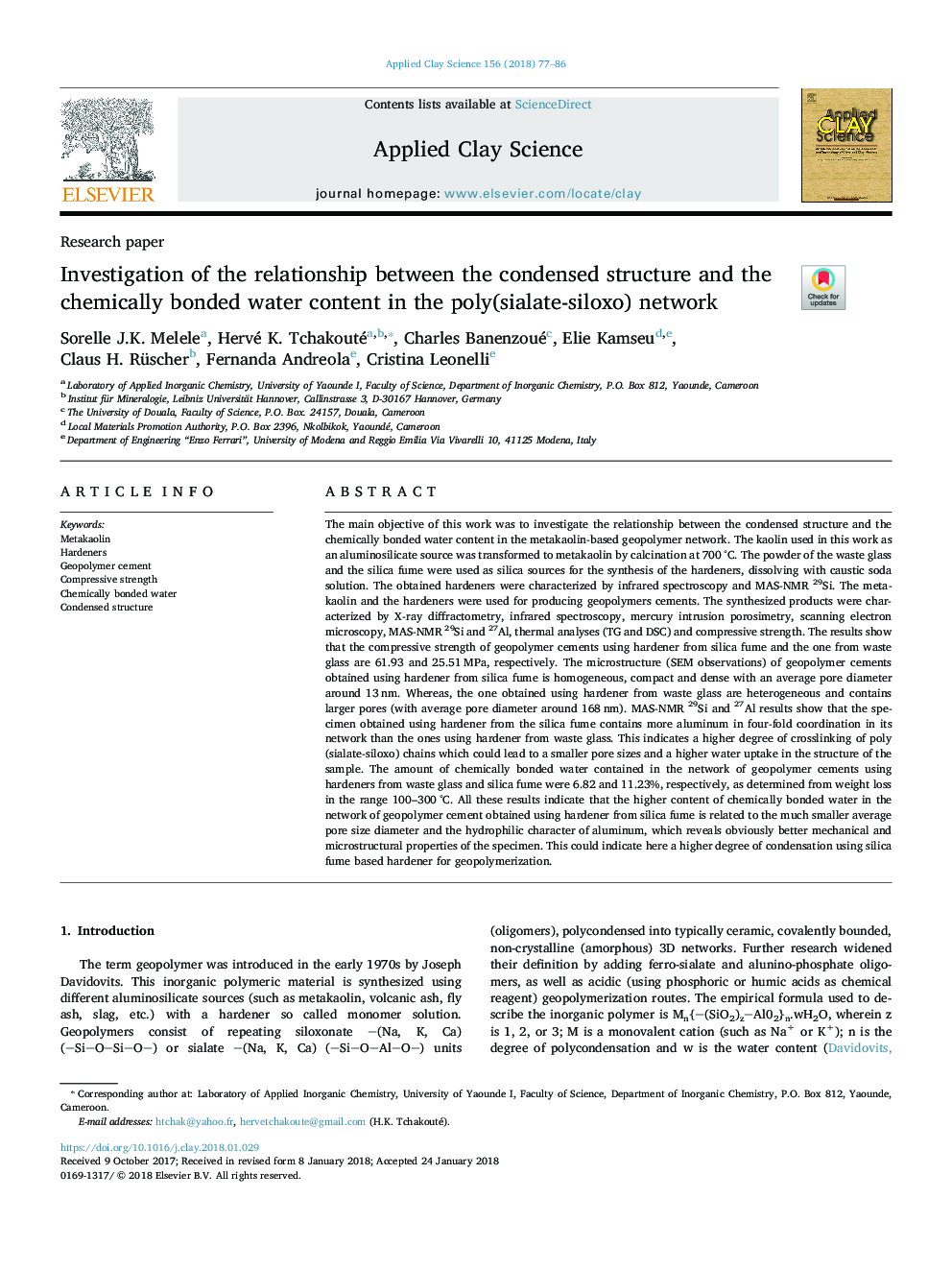| Article ID | Journal | Published Year | Pages | File Type |
|---|---|---|---|---|
| 8046081 | Applied Clay Science | 2018 | 10 Pages |
Abstract
The main objective of this work was to investigate the relationship between the condensed structure and the chemically bonded water content in the metakaolin-based geopolymer network. The kaolin used in this work as an aluminosilicate source was transformed to metakaolin by calcination at 700â¯Â°C. The powder of the waste glass and the silica fume were used as silica sources for the synthesis of the hardeners, dissolving with caustic soda solution. The obtained hardeners were characterized by infrared spectroscopy and MAS-NMR 29Si. The metakaolin and the hardeners were used for producing geopolymers cements. The synthesized products were characterized by X-ray diffractometry, infrared spectroscopy, mercury intrusion porosimetry, scanning electron microscopy, MAS-NMR 29Si and 27Al, thermal analyses (TG and DSC) and compressive strength. The results show that the compressive strength of geopolymer cements using hardener from silica fume and the one from waste glass are 61.93 and 25.51â¯MPa, respectively. The microstructure (SEM observations) of geopolymer cements obtained using hardener from silica fume is homogeneous, compact and dense with an average pore diameter around 13â¯nm. Whereas, the one obtained using hardener from waste glass are heterogeneous and contains larger pores (with average pore diameter around 168â¯nm). MAS-NMR 29Si and 27Al results show that the specimen obtained using hardener from the silica fume contains more aluminum in four-fold coordination in its network than the ones using hardener from waste glass. This indicates a higher degree of crosslinking of poly(sialate-siloxo) chains which could lead to a smaller pore sizes and a higher water uptake in the structure of the sample. The amount of chemically bonded water contained in the network of geopolymer cements using hardeners from waste glass and silica fume were 6.82 and 11.23%, respectively, as determined from weight loss in the range 100-300â¯Â°C. All these results indicate that the higher content of chemically bonded water in the network of geopolymer cement obtained using hardener from silica fume is related to the much smaller average pore size diameter and the hydrophilic character of aluminum, which reveals obviously better mechanical and microstructural properties of the specimen. This could indicate here a higher degree of condensation using silica fume based hardener for geopolymerization.
Related Topics
Physical Sciences and Engineering
Earth and Planetary Sciences
Geochemistry and Petrology
Authors
Sorelle J.K. Melele, Hervé K. Tchakouté, Charles Banenzoué, Elie Kamseu, Claus H. Rüscher, Fernanda Andreola, Cristina Leonelli,
